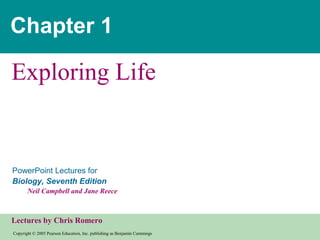The document is an introductory biology textbook chapter that discusses key concepts in biology. It defines biology as the study of life, explores the diversity of life forms from molecules to entire ecosystems, and describes the hierarchical organization of living things from cells to organisms. It also explains how biologists classify life into domains, kingdoms, and taxa to reflect evolutionary relationships. The chapter establishes that biology explores life across all levels of organization and diversity.


































































